Rewilding the spaces around us doesn’t need to be complicated. We can start small, make mistakes and learn a lot along the way.
The front of my home looks a lot like the others around it: a minivan parked in the driveway and a yard full of turf grass. While the former has obvious environmental impacts, the latter is surprisingly harmful, too. With three kids in the suburbs, I can’t do much about the minivan. But I’m hoping to change the lawn. And no one is better qualified to help me than my friend Laura Tipton, an avid native plant gardener who works at Native Plants in Claremont, Ont., about an hour northeast of Toronto.
Laura’s front yard once looked like mine (albeit bigger). She began her journey with a barren yard and traditional lawn. Now, her property is its own rich ecosystem and turf is nowhere to be seen – all thanks to rewilding. (It's Laura's yard that's pictured in these photos.) “Learning about native plants was a perfect lightbulb moment for me,” she says – “connecting the relationships between native plants, the ecosystem and the land we live on.”
Laura has taught me endless fascinating things about nature. She pulls garlic mustard from our local park because it’s invasive in Ontario (and also, conveniently, yummy). She taught me that if you see a coyote “following” you, it’s probably just gently guiding you away from its home and babies. And she enthusiastically shares the joy of rewilding. “The most powerful thing about planting native is the benefits you can tangibly see and feel,” says Laura.
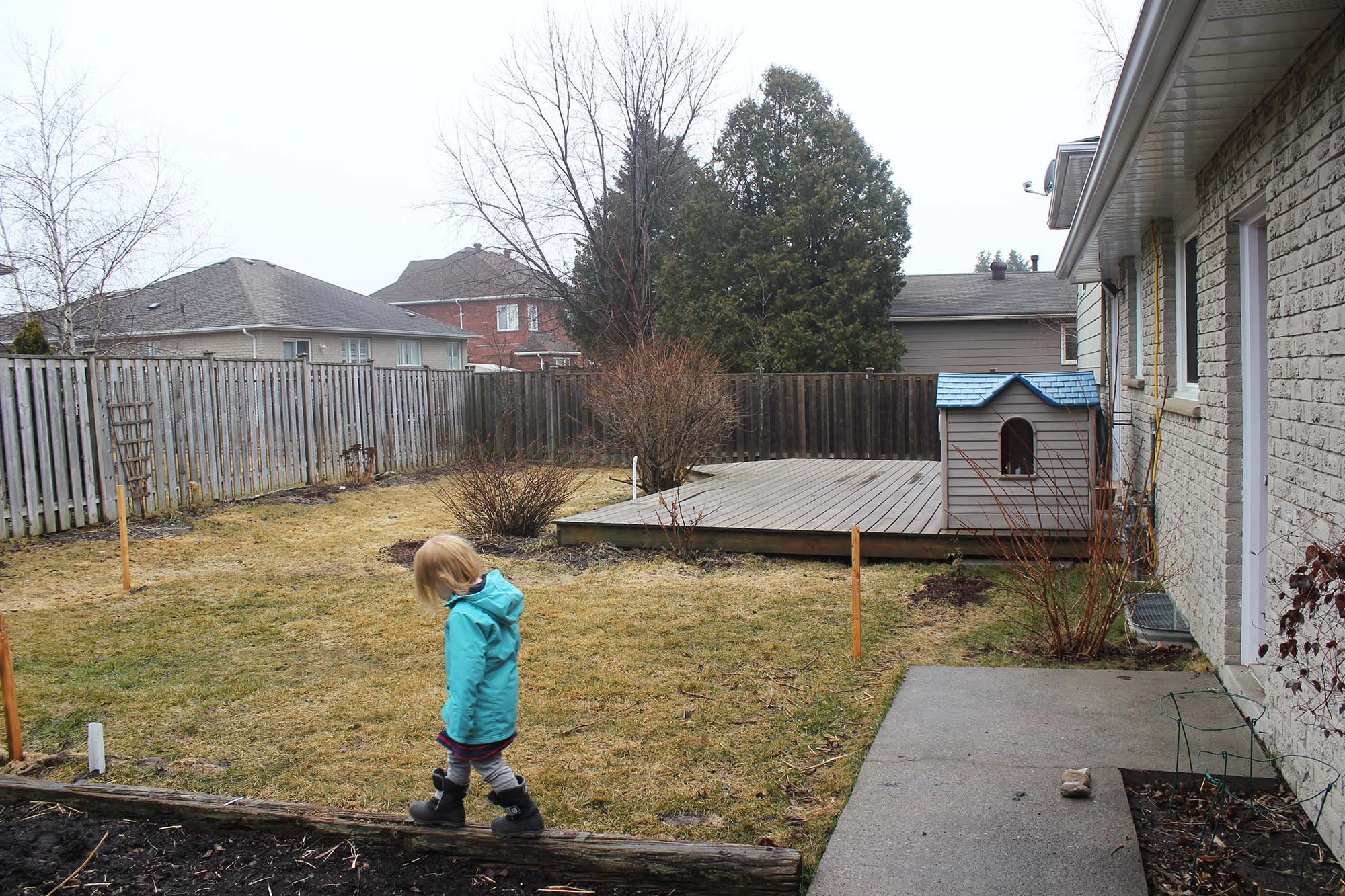
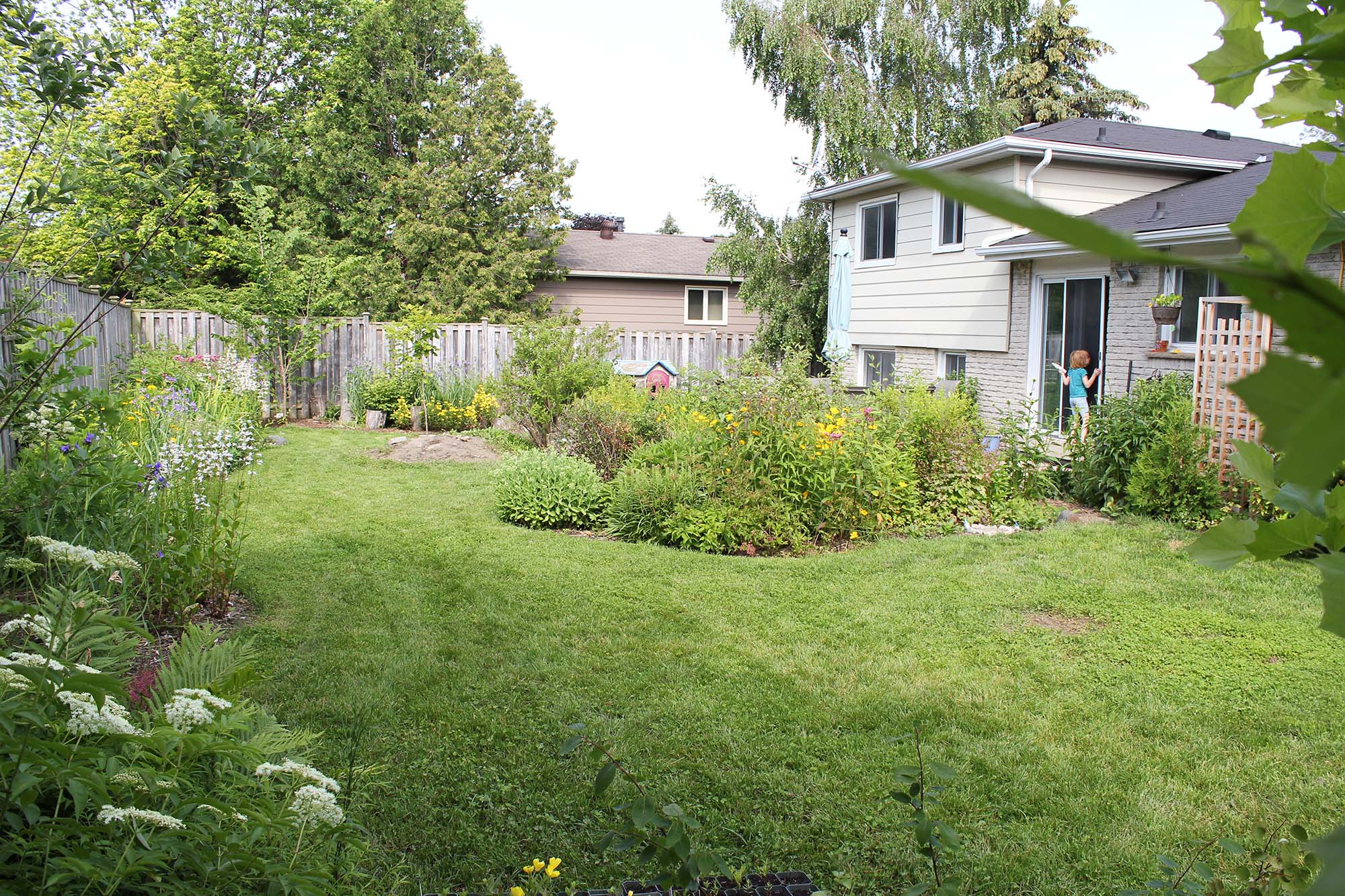
This style of gardening also tends to be a lot easier to maintain – and easier on the earth. “These plants require less water as they are adapted to our local conditions and do not require artificial fertilizers and synthetic chemical pesticides,” Laura explains. If you’re looking for a simple way to reduce your carbon footprint and limit the effects of global warming, planting native is exactly that. “The roots of native plants run far deeper than turf lawn, so they help with absorbing and filtering water,” Laura says. She also points out that native plant communities help to nourish healthier soil, clean the air and regenerate biodiversity.
Laura is passionate about protecting the earth and doing her part, and she’s also kind to complete native plant beginners like me. When I started to rewild my backyard two years ago, I had no clue what to do, so I asked her. The first suggestion I followed was to buy the sun and shade kits from Native Plants, which included a tray of 18 native wildflowers in the sunny kit and 15 in the shady one (of about 10 different species in each category, which vary depending on availability throughout the seasons).
They were small seedlings, and I wasn’t even sure I had successfully planted them until the following summer, when suddenly I had several vibrant, flourishing plants providing refuge for pollinators. No one was more surprised than me when many of the things I planted – more than half – actually survived. My south-facing backyard was mostly successful with the plants from the sunny kit. Purple blooms of wild bergamot, bright yellow grey-headed coneflowers, sunny lanceleaf coreopsis and Canada wild rye are among my favourites of those that bloomed happily. But this is the beauty of native plants: They belong. They thrive in local conditions because they evolved – in their own specific climate and location – to keep themselves alive.

Since I started to rewild, numerous creatures have visited our yard: frogs, bunnies, toads, bees, butterflies and even snakes. And that’s with just a handful of plants. There’s still so much more I want to do.
The next project to tackle is my aforementioned front lawn. (A generous description, as it’s more a grassy patch of dirt.) I tried to replace the turf with a wildflower ground cover last year. It didn’t work. And Laura promises me this is not my fault. “[Builders] tend to scrape off all the topsoil," she says, "and there’s a lot of compaction when they build, which makes it challenging to grow.” But it's also not impossible to fix. And Laura says she can definitely help.
For those that don’t have a Laura, here are her tips for rewilding your space, no matter its size.
1. Start small
“The very easiest first step, I think, is to just go ahead and plant a native plant,” says Laura. “It may not be the perfect one for the space, but I think the best way to learn is to get your hands dirty and not be afraid to make mistakes. I am still making them!”
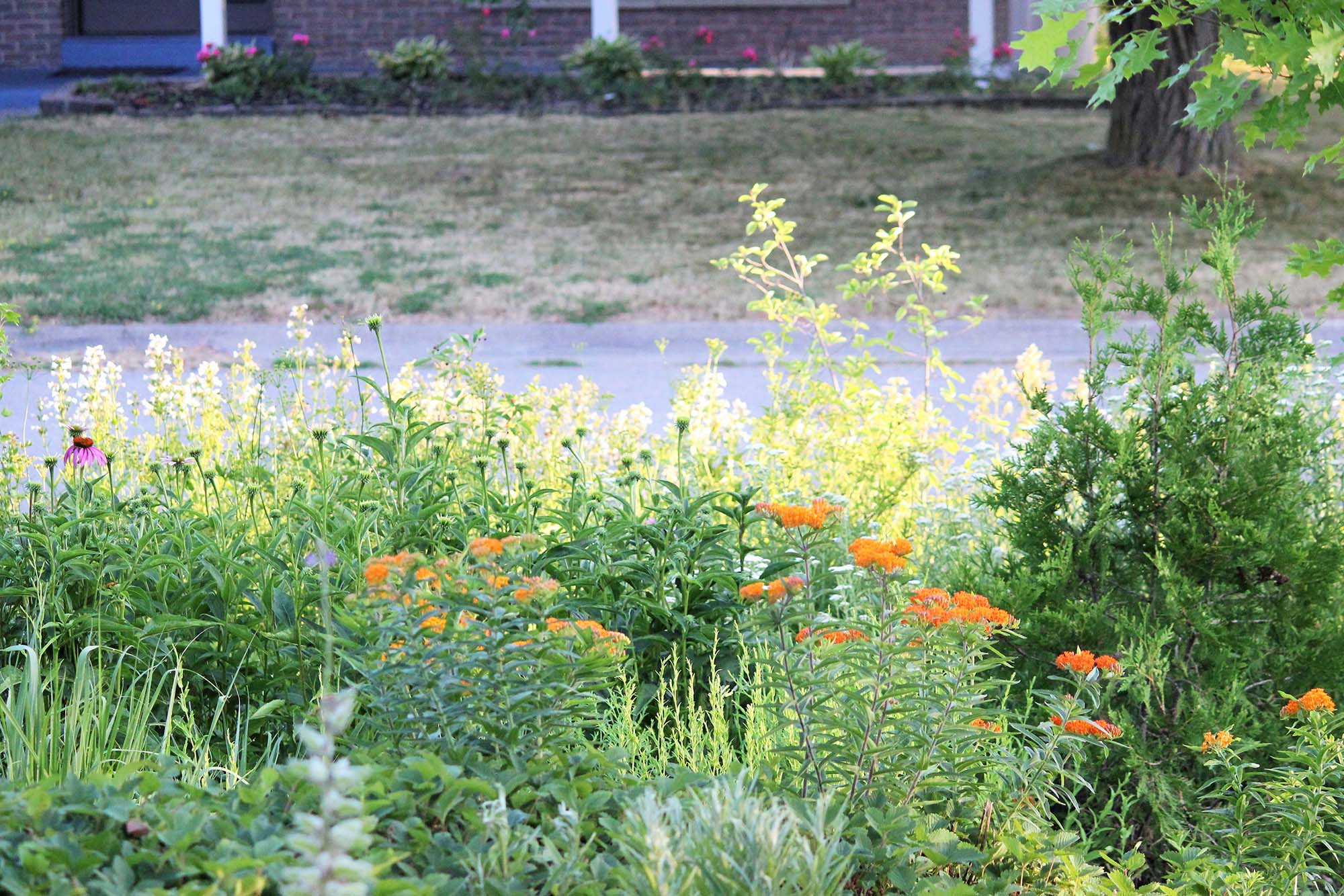
In North America, for instance, you might choose something like milkweed, a plant genus with numerous species native to different parts of the continent. “Planting one native milkweed will provide resources for pollinators and a place for monarch butterflies to lay eggs and for their caterpillars to feed,” says Laura. “It could also attract milkweed beetles and a host of other life.”
If you aren’t sure which plant to start with, Laura recommends thinking about which animals or insects you want to attract, then working backwards from there by finding out what plants might provide food or shelter for those creatures. This can be as simple as a quick Google search of “native plants” + “your location.” Or “native shrubs and trees to attract pollinators in my location.” A search like this will often bring up a list of plants native to your area or information about native plant garden centres nearby.
2. Evaluate your space
Before you plant, it’s helpful if you know what conditions you’re working with. You can start by looking at your space, deciding what your rewilding goal is and figuring out if it will mesh well with the conditions of the land you have available. “If you can evaluate the approximate amount of sun, type of soil and moisture level in your space, you have a starting point to figure out what might grow,” Laura says. If you have a larger space, you might choose to plant a couple of native trees. That big-impact upfront success can inspire you to add native flowering shrubs and plants over time.


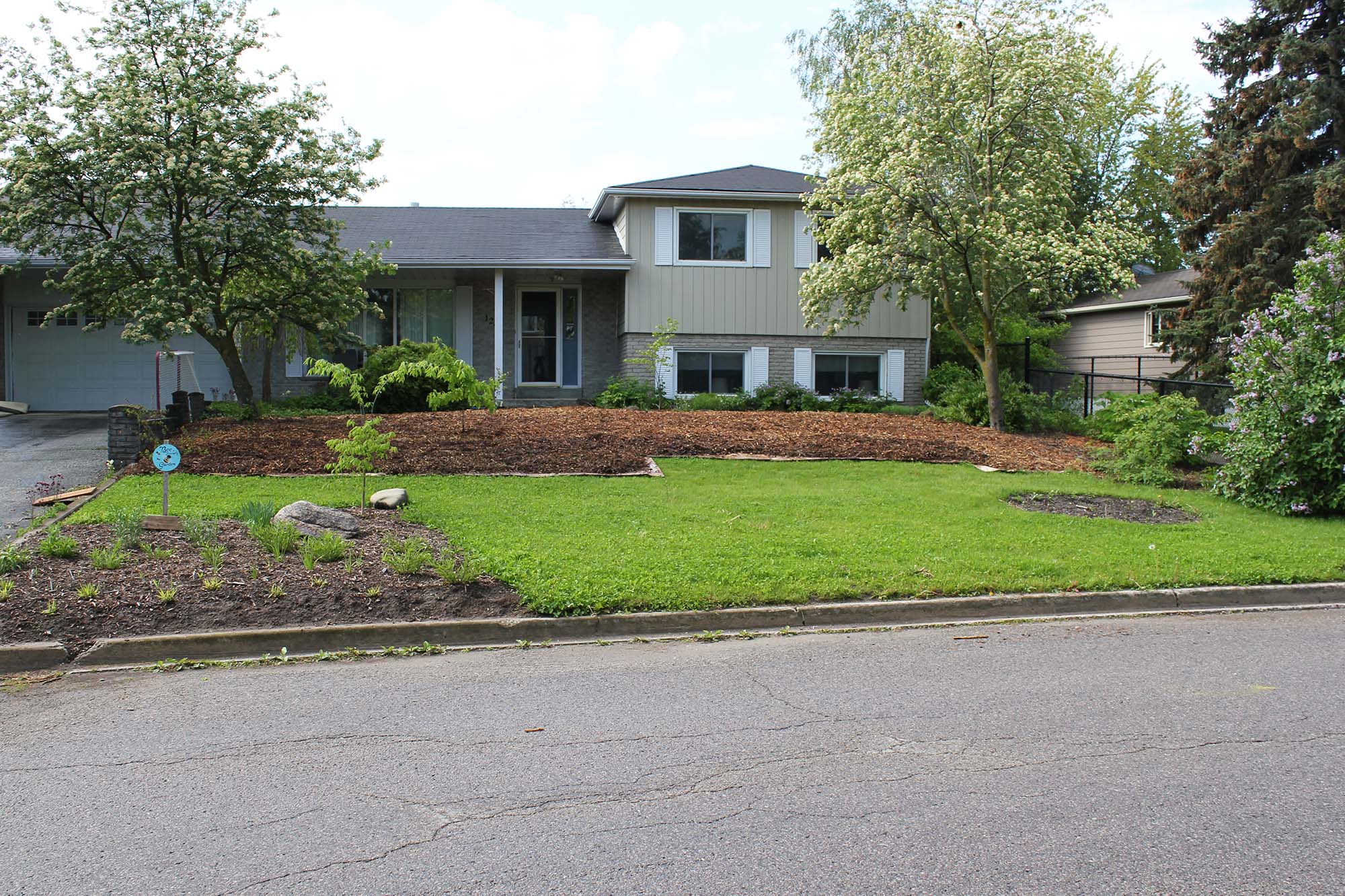
But you don't need a yard to play along. “Even if you have a balcony, you can grow in containers and provide for wildlife,” Laura says. If you don’t even have a spot for a container, or if you want to expand your native planting further, there are plenty of other options as well.
A community garden is a great place to start if you don’t have your own space. If you have kids, another option is to apply for grants for your child’s school. World Wildlife Fund Canada, for instance, offers “Go Wild” school grants. Each fall, students and educators are invited to apply for a grant to kick-start school projects that help nature thrive. The David Suzuki Foundation also offers free wildflowers to schools in Canada that wish to take part in their Butterflyway Project, a volunteer-led movement growing “highways” of habitat for bees and butterflies across Canada. The result? Butterfly-friendly pollinator patches in hundreds of Canadian schoolyards.
3. Connect with the experts
You can also do what I did, and get a native plant kit suited to your conditions from a local native plant nursery. It really took the guesswork out of the whole planting process for me. Even with an empty yard and limited gardening knowledge, planting in sunny spots versus shady was a simple task. I wouldn’t even have known this option existed if not for Laura and the guidance of the staff at Native Plants.

The best part of visiting a local native plant nursery? “The plants will be suited to your local climate and staff are usually very knowledgeable,” Laura says. “Often native plants aren’t grown to look floriferous and appealing in nursery pots, unlike plants in conventional garden centres, so staff members are helpful in explaining plant requirements and growth habits.”
Local native plant nurseries aren’t the only places that offer advice and planting tips. Non-profits often have free resources and your town or city might have workshops on everything from rain barrels to pollinator awareness and habitat. There could also be a gardening group or club that would be happy to share their knowledge. Consider searching for subsidized backyard tree planting programs, spring native plant sales or expert talk series in your community.
4. Meet the neighbours
The insects and creatures that visit your space are all part of a healthy ecosystem. Welcome these visitors knowing you’ve created a safe space for them. And if the insects are eating your native plants, there’s reason to celebrate. “If you grow native plants, life will move in, and it will do so surprisingly quickly,” Laura says. This is evidence that your efforts are paying off.
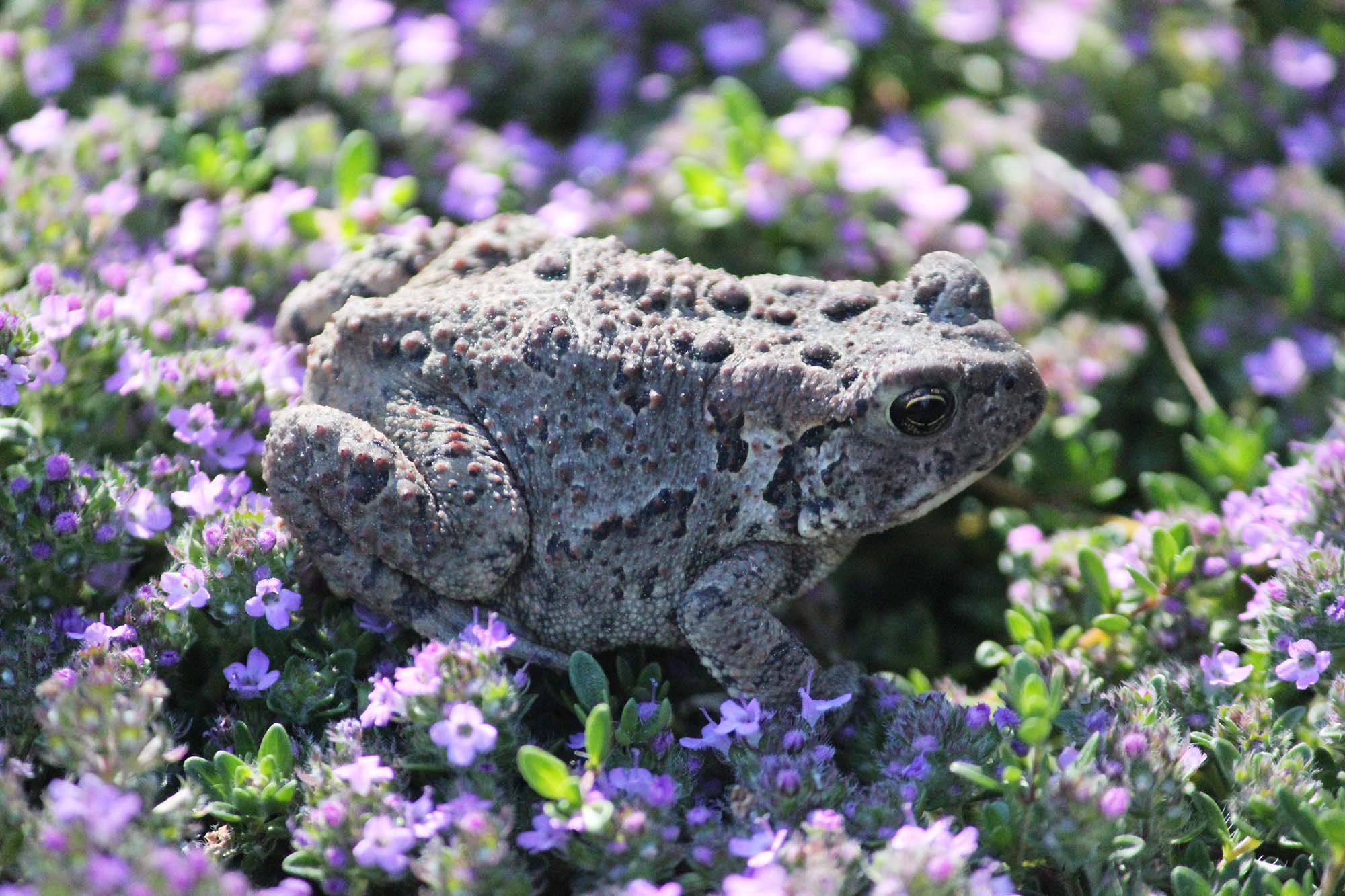
“Native plants and native wildlife species evolved together,” Laura adds. “The special relationships that creatures have with [native] plants mean that the mere act of growing will begin a blaze of new life around your home.”
5. Embrace mistakes
Mistakes are part of the journey, and are actually a helpful way to learn. “I have done all the wrong things,” Laura admits. She’s gone to the garden centre and unknowingly bought invasive plants. She’s bought non-native pollinator seed packs that don’t list the species they contain. She’s planted natives unsuited to her conditions that died. And a whole lot more.
But the process is that much more gratifying for its struggles. “Gardens are a great place to make mistakes and learn,” Laura says. “You may be surprised by how forgiving and rewarding nature is.”

6. Offer support and encouragement, and ask for help
Last year in my backyard, a group of my favourite native plants – grey-headed coneflower, native milkweed and lanceleaf coreopsis – started to droop sideways. They are getting bigger, and falling over as a result. Of course, I went to Laura with this predicament, and she recommended adding in some native grasses. Not only does this grouping mimic how the plants grow together in the wild, but when they are together they support both the environment and each other.
This is true of humans, too. We are meant to grow together. Individually, it might seem like the decision to plant one native plant is insignificant. But collectively? We are planting an abundant wildflower field, one joyful colour blending into the next, until we’re never quite sure where it began. “Though your own land may seem minor, small efforts by many people can have a vast impact,” says Laura. “For me, to plant native is a profound act of hope.”







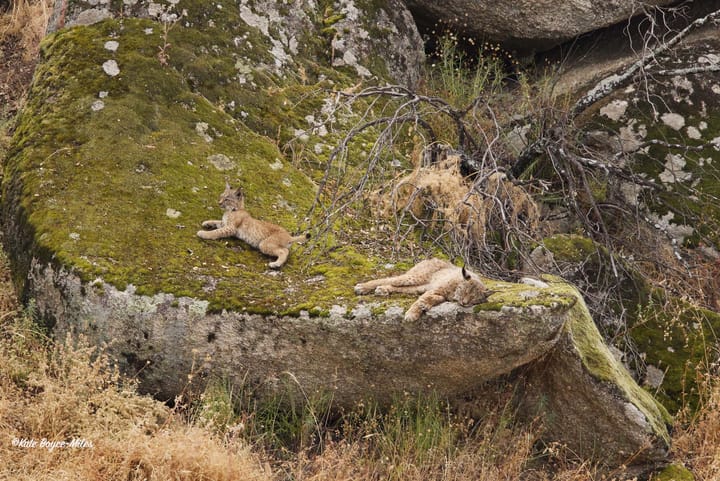
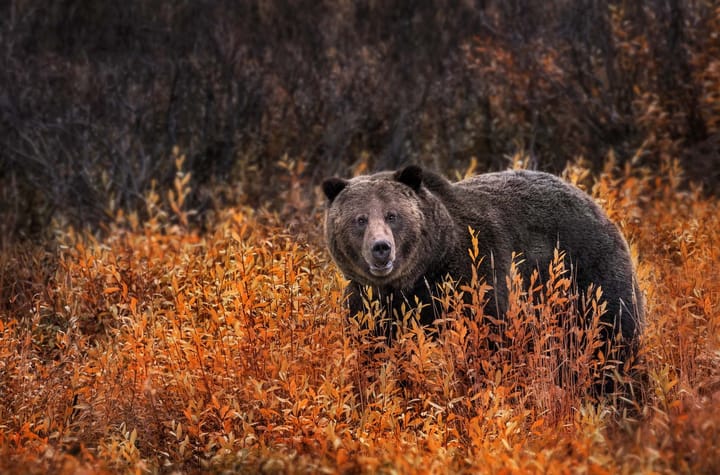
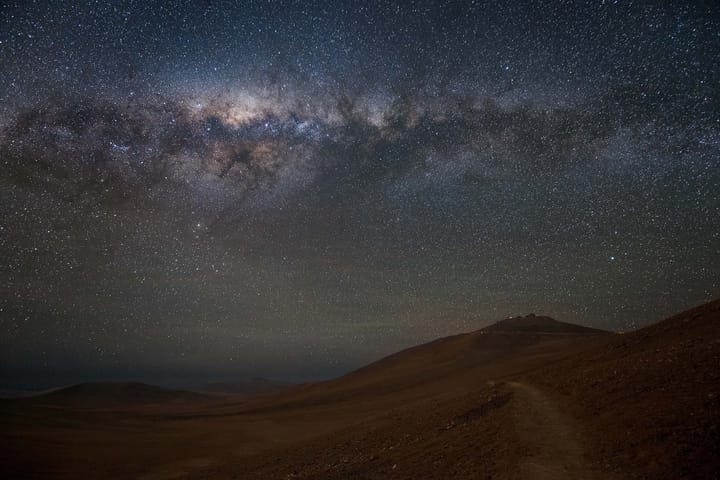

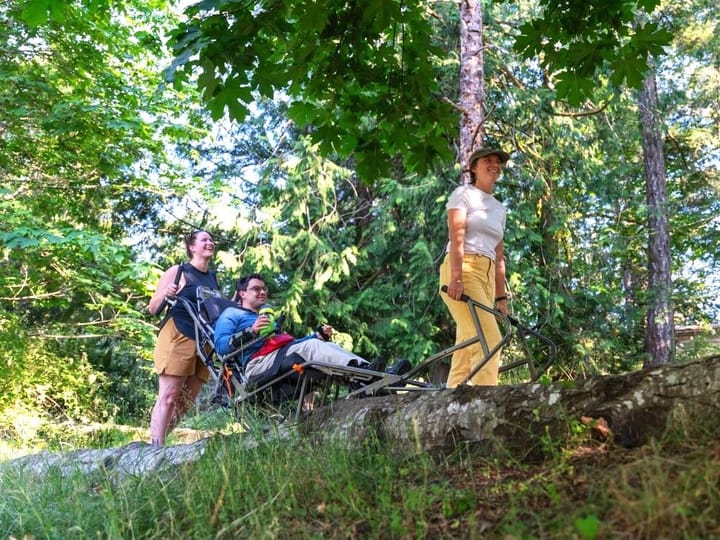

Comments ()